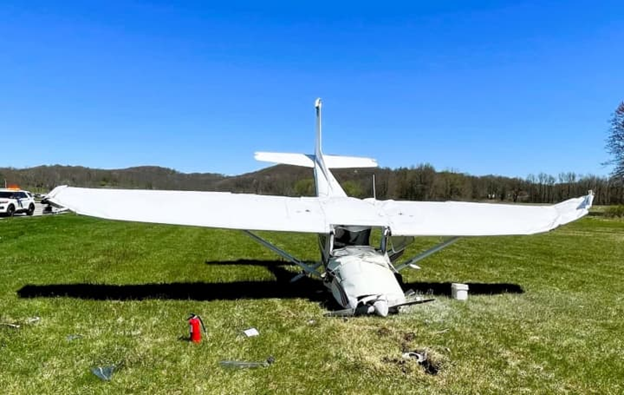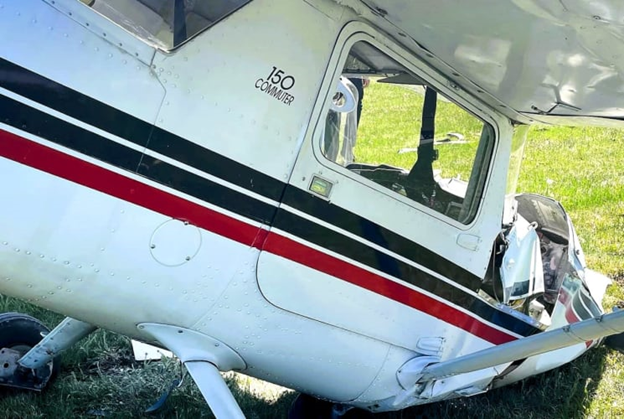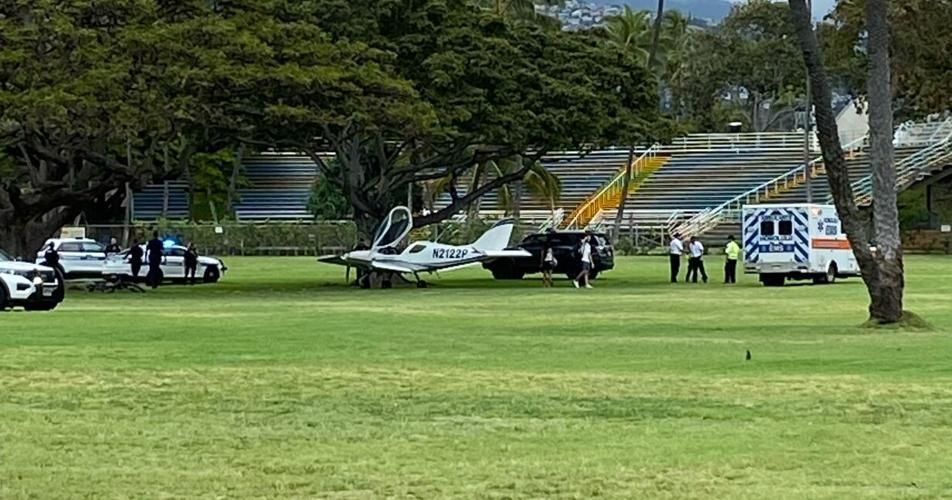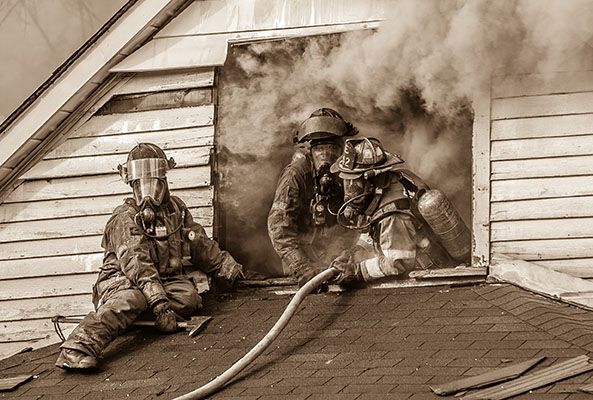ARFF Daily News
Published on:
Wednesday the 17th of April, 2024
Here are the stories for today...
Of note, the FAA has added a presentation titled "Fluorine-free Foam (F3) Transition Awareness Presentation" to their Fluorine-Free Foam (F3) Transition for Aircraft Firefighting page on the FAA website.
And from the IAFF, the Occupational Safety and Health Administration (OSHA) is proposing an update to workplace protections for fire fighters and other emergency service personnel, marking the first significant revision in over forty years. OSHA’s public comment period is now open with comments being accepted before the June 21, 2024 deadline.
Be safe out there!
Tom
Sussex Airport Plane Crash Cessna Wantage UPDATE
A pilot got out OK after his Cessna crashed nose-first off the runway Tuesday morning at Sussex Airport, the FAA confirmed.
The single-engine 150 crashed at the privately-owned 96-acre airport on County Road 629 in Wantage around 11:45 a.m. April 16.
Only the pilot was aboard.
New Jersey State Police and local firefighters responded.
The Federal Aviation Administration is investigating the cause.
Colesville Fire Company took the photos and contributed to this story.
https://dailyvoice.com/new-jersey/sussex/sussex-airport-plane-crash-cessna-wantage/


Plane makes unexpected emergency landing at Kapiolani Park
HONOLULU (Island News) -- A small aircraft executed an emergency landing at Kapiolani Park Tuesday afternoon, April 16, prompting a quick response from authorities.
The landing sent multiple police officers to the scene and one witness very close to the plane shares exactly what he saw.
"I was laying down like right at this tree right here and I heard like a loud sputtering and I looked up, and the plane was like right above the Waikiki Shell and it looked like it was flying directly to Diamond Head, then it looped in the field and when it did the loop in the field it just came straight here and I was already standing up so I just ran to safety," explained Timothy Mash.
Timothy said he was watching the whole thing and right when the plane stopped, he saw two people get up and got out of the plane safely.
"Looking at the plane it looks like they did a perfect job because there's no structural damage, they're all safe no one's injured,” Taylor Ishida, a Licensed Pilot said. “That is like the perfect outcome you can hope for as a pilot."
The Honolulu Police Department says they started receiving calls at about the landing at 2:53 p.m. there were two occupants in the plane but they could not confirm what caused the emergency landing.
"I'm just very grateful and like blessed that no one's injured,” Timothy said. “Eventful day today at the tree."
The plane owner who is a pilot for the Navy Reserves also said they're grateful everyone is alive.
https://www.kitv.com/news/plane-makes-unexpected-emergency-landing-at-kapiolani-park/article_31a8dbbc-fc5a-11ee-aec1-f7cac515f9b6.html

U.S. Federal Aviation Administration - Updated Fluorine-Free Foam (F3) Transition for Aircraft Firefighting Web Page
We recently added the following to the Fluorine-Free Foam (F3) Transition for Aircraft Firefighting page on the FAA website.
Fluorine-free Foam (F3) Transition Awareness Presentation

Comment period open for OSHA’s proposed Emergency Response Standard
The Occupational Safety and Health Administration (OSHA) is proposing an update to workplace protections for fire fighters and other emergency service personnel, marking the first significant revision in over forty years.
In an email to affiliate leaders, General President Edward Kelly said the changes – which the IAFF has tirelessly lobbied for – “have the potential to reshape fire fighter safety and save the lives of IAFF members by officially acknowledging basic industry standards.”
“Our job will never stop being dangerous, but there are steps we can take to make it safer,” Kelly said. “This update is long overdue, and the Biden Administration agrees.”
The proposed standard seeks to update the Fire Brigades Standard, enacted in 1980, and rename it the Emergency Response Standard.
It calls for changes in all aspects of emergency response, including staffing, training, apparatus readiness, and protective clothing and equipment. Additionally, it will require employers to obtain baseline medical screenings for all emergency responders and requires access to behavioral health resources.
Let me be clear, our IAFF will never support a policy that jeopardizes fire fighters’ jobs. Every day, the IAFF fights to make our jobs as safe and dignified as possible, and we will fight to ensure this proposal is a floor for our safety and nothing more.
General President Edward Kelly
OSHA’s public comment period is now open, and the IAFF is encouraging leaders to submit their comments before the June 21, 2024 deadline.
Recognizing that there is no one-size-fits-all approach, the OSHA proposal requires employers to work with employees to design safety plans that make sense for each community and fire department.
Read the full proposal here.
For questions regarding the proposed regulations, please contact Director of Health & Safety Operational Services Sean DeCrane (sdecrane@iaff.org). For assistance submitting your comments, please contact Director of Government Affairs Evan Davis (edavis@iaff.org).
https://www.iaff.org/news/comment-period-open-for-oshas-proposed-emergency-response-standard/

NTSB Final Report: Javron PA-12 Replica
Following The Water Landing, The Airplane Came To Rest Inverted In The River
Location: Inver Grove Heights, Minnesota Accident Number: CEN24LA109
Date & Time: February 4, 2024, 12:30 Local Registration: N360WC
Aircraft: Javron PA-12 Replica Aircraft Damage: Substantial
Defining Event: Landing gear not configured Injuries: 1 Minor
Flight Conducted Under: Part 91: General aviation - Personal
Analysis: The pilot reported that he was landing the airplane on the water and that after he conducted his before landing “GUMP” checklist he extended the landing gear on his amphibious airplane in error.
Following the water landing, the airplane came to rest inverted in the river and sustained substantial damage to both wings and the windscreen.
The pilot reported that there were no preaccident mechanical failures or malfunctions with the airplane that would have precluded normal operation.
Probable Cause and Findings: The National Transportation Safety Board determines the probable cause(s) of this accident to be -- The pilot’s failure to properly configure the landing gear on his amphibious airplane before landing on water.
FMI: www.ntsb.gov

Today in History
60 Years ago today: On 17 April 1964 a Middle East Airlines Caravelle crashed off Dhahran, Saudi Arabia, killing all 49 occupants.
Date: Friday 17 April 1964
Time: 19:32
Type: Sud Aviation SE-210 Caravelle III
Owner/operator: Middle East Airlines - MEA
Registration: OD-AEM
MSN: 23
Year of manufacture: 1960
Fatalities: Fatalities: 49 / Occupants: 49
Aircraft damage: Destroyed, written off
Category: Accident
Location: 19 km SSE of Dhahran International Airport (DHA) - Saudi Arabia
Phase: Approach
Nature: Passenger - Scheduled
Departure airport: Beirut International Airport (BEY/OLBA)
Destination airport: Dhahran International Airport (DHA/OEDR)
Confidence Rating: Accident investigation report completed and information captured
Narrative:
Flight ME 444 departed Beirut (BEY) at 17:09 UTC and climbed to its cruising altitude of FL300. At 19:04 the aircraft reported to Bahrain Control that it was estimating Dhahran (DHA) at 19:28, and was cleared to descend to reach FL50 over the Dhahran beacon. At 19:06 weather information was reported to flight 444, which read a NNE/10 knots wind, gusting to 16, and 0,5nm visibility (in a sandstorm). At 19:26 the pilot reported estimating the Dhahran NDB in two minutes. At 19:28 it contacted Dhahran and reported "5 000 feet descending" and was cleared for an ADF approach. The controller requested the crew to report at 4000 feet and outbound at 2000 feet. One minute later it reported leaving 4000 feet and at 19:30 passing 2500 feet and turning inbound. It was then cleared to final approach and requested to report reaching minimum and runway in sight. At approximately 19:32 a short loud transmission noise was recorded by the Tower. No further message was received from the flight. It was subsequently found that the aircraft struck the sea at the completion of the procedure turn 4 NM off shore and 10 NM south of Dhahran Airport.
The investigation team concluded that there was no mechanical failure that could have caused the accident. Several theories were investigated, a.o. erroneous radio altimeter indications as a result of the sandstorm (these effects have been proven in tests done by Air France), but the team was not able to prove any of those theories.
PROBABLE CAUSE: "The probable cause of this accident can not be ascertained."

Mailing Address
Subscribe to our newsletter
Contact Us
We will get back to you as soon as possible.
Please try again later.
